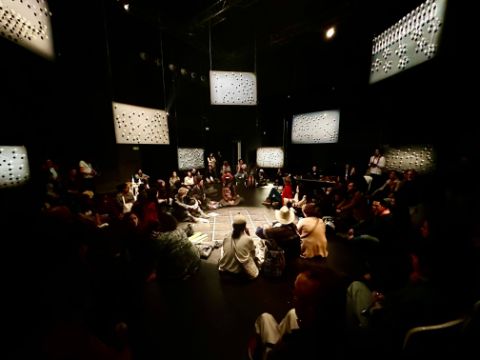Altar XR
Gesture of common purpose led by Diana Rico
Fri., 24.1.2025
18:00
Mrinalini Mukherjee Hall
Free entry
In English
Duration: 20’

Courtesy: Diana Rico
For Rising from The Ashes—A Convening on Rematriations, Reparations, and Restitutions, Diana Rico, a multidisciplinary artist with decades long work with various Indigenous communities of Abya Yala, proposes the collective practice of altars, as forms of shared extended reality. An altar can be understood as a mark on the territory, a center, a navel, a point of gravity where a bulto (bundle) is opened and activated. The bundle is an assemblage of tools and artefacts that serve to create an altar, with which a space is transformed, by adding a new temporal dimension that occurs within a specific time frame—from the moment it is planted until its dismantling. Within this framework, the altar opens a space and time for its reading, an ancestral contemplative practice where art, health, science, politics, and spirituality coincide simultaneously at an epicentre. The contemplation, a chorographic act (the act of describing, mapping), is a ritual that invites to the intuitive deciphering of information, connections, and knowledge, bringing multiple moments and spaces into proximity, while cultivating singular narratives and a collective myth.
The organizing principle used for these specific altars is the chakana (commonly known in the Andes as the Southern Cross): a constellation that governs the sky of South America and on earth serves as a compass and design for all altars, both small or monumental. It marks the four directions, the solstices and equinoxes, as well as its interstices; a multidimensional star of eight points with thirteen spaces within. The chakana opens the possibility of studying space and time, the eras and transitions, and their celebrations, and is commonly called the eye of the four winds: earth, water, air, and fire.